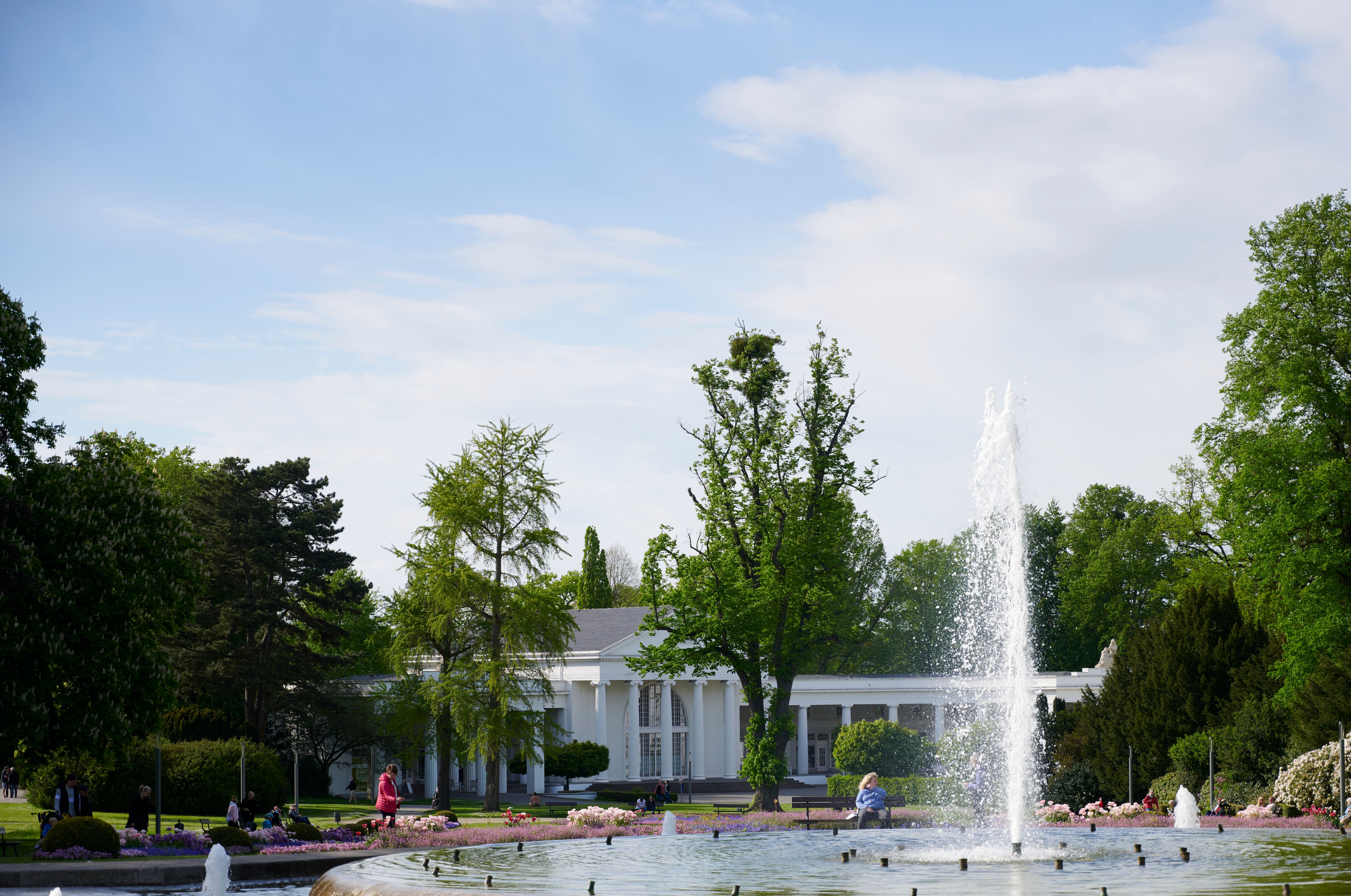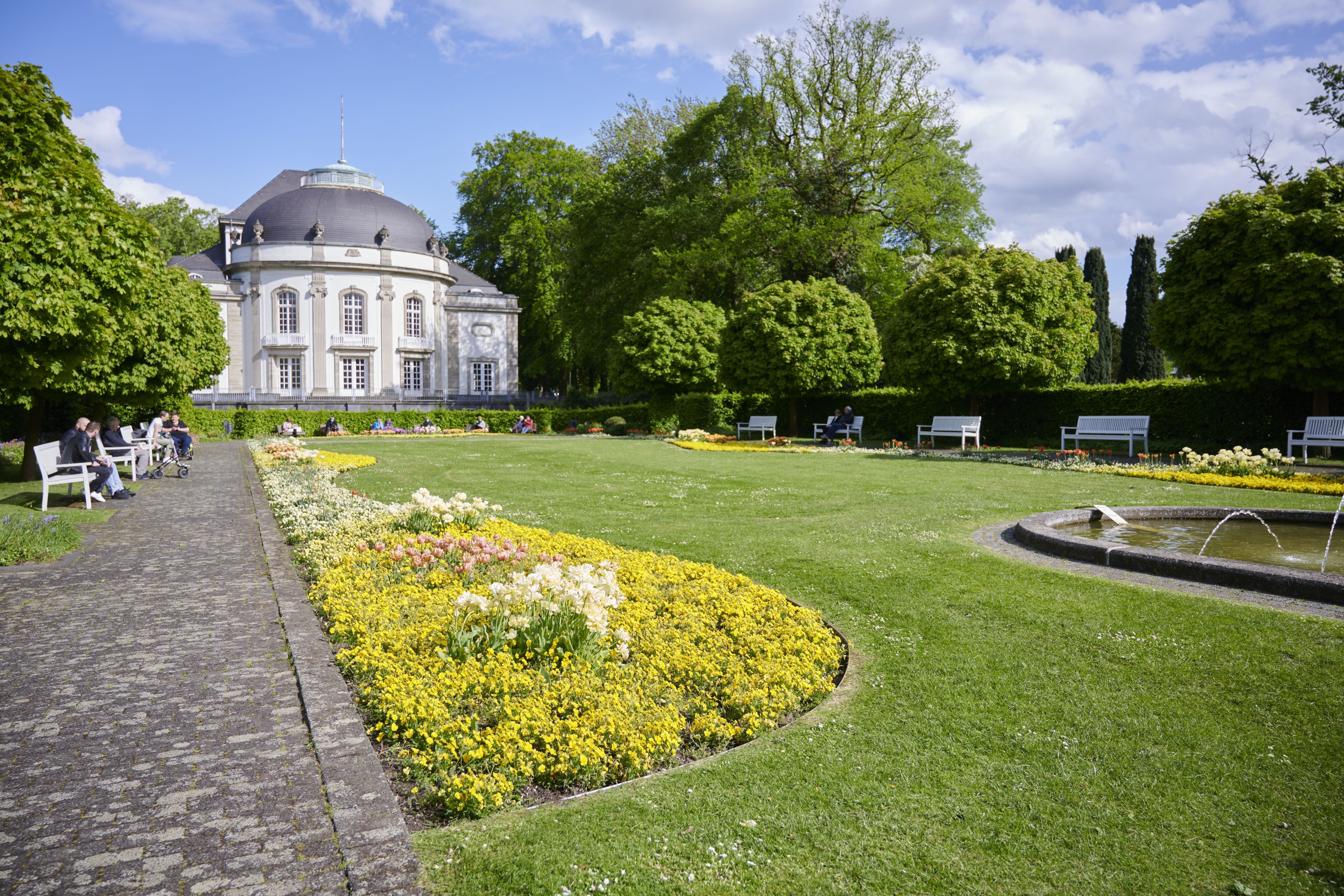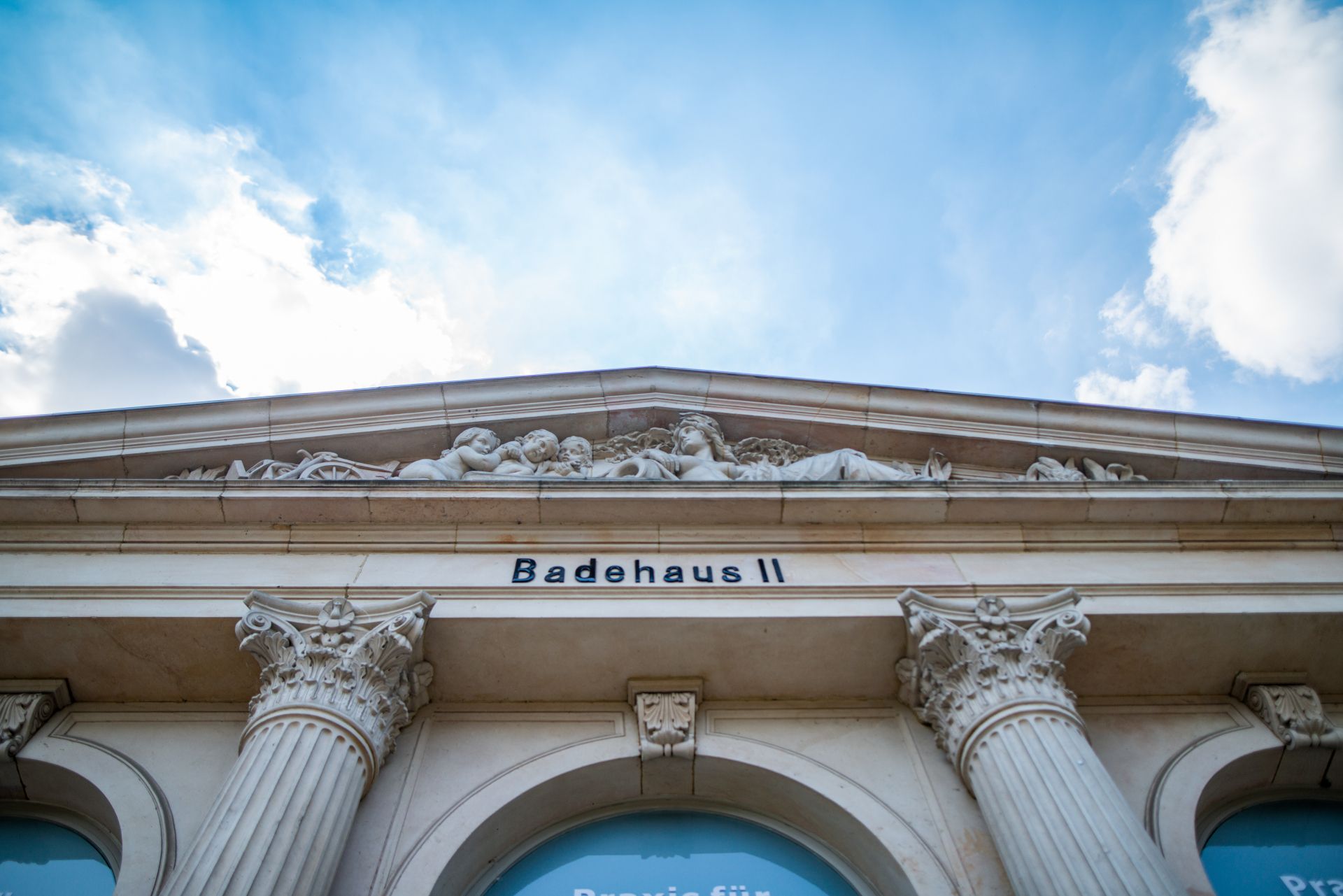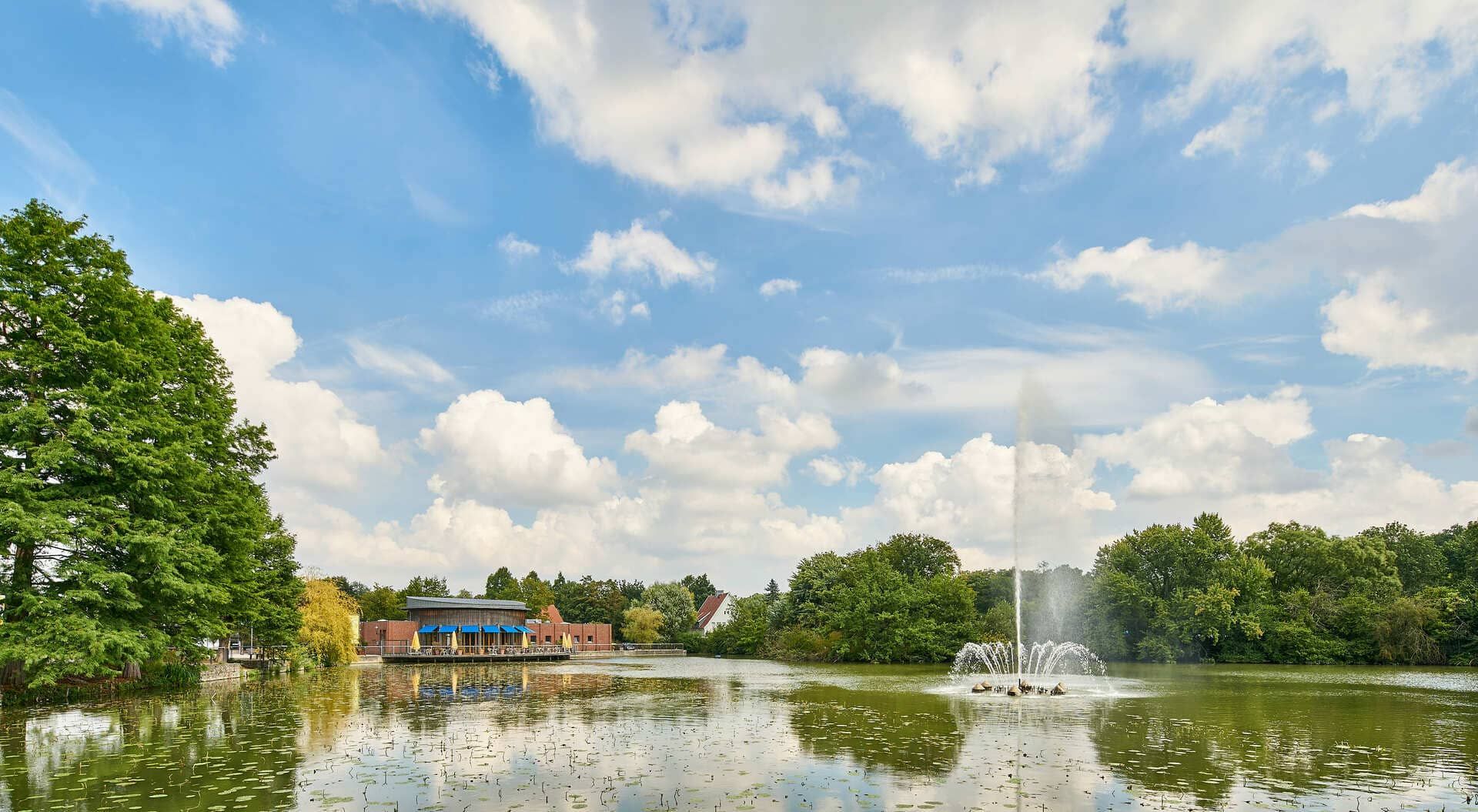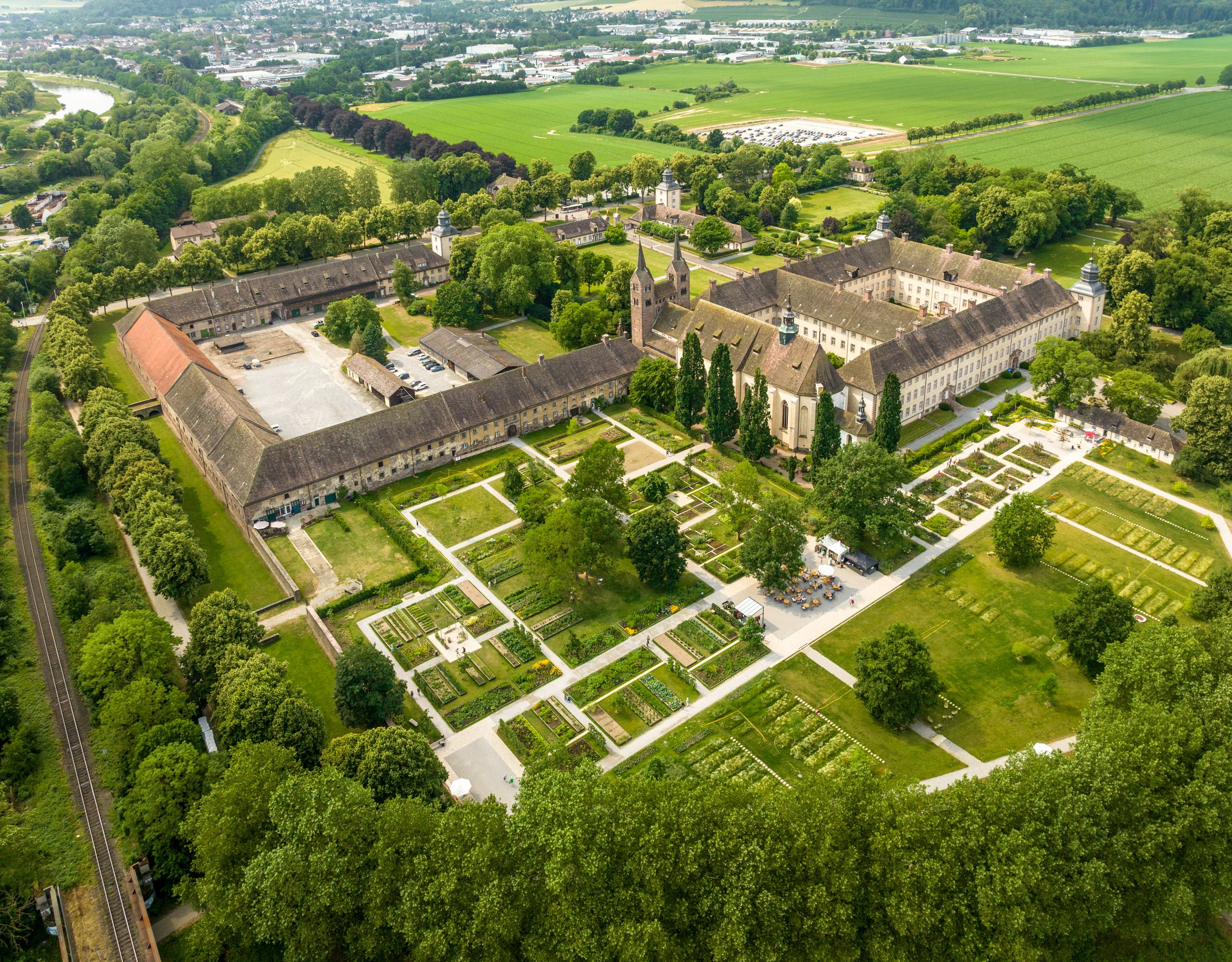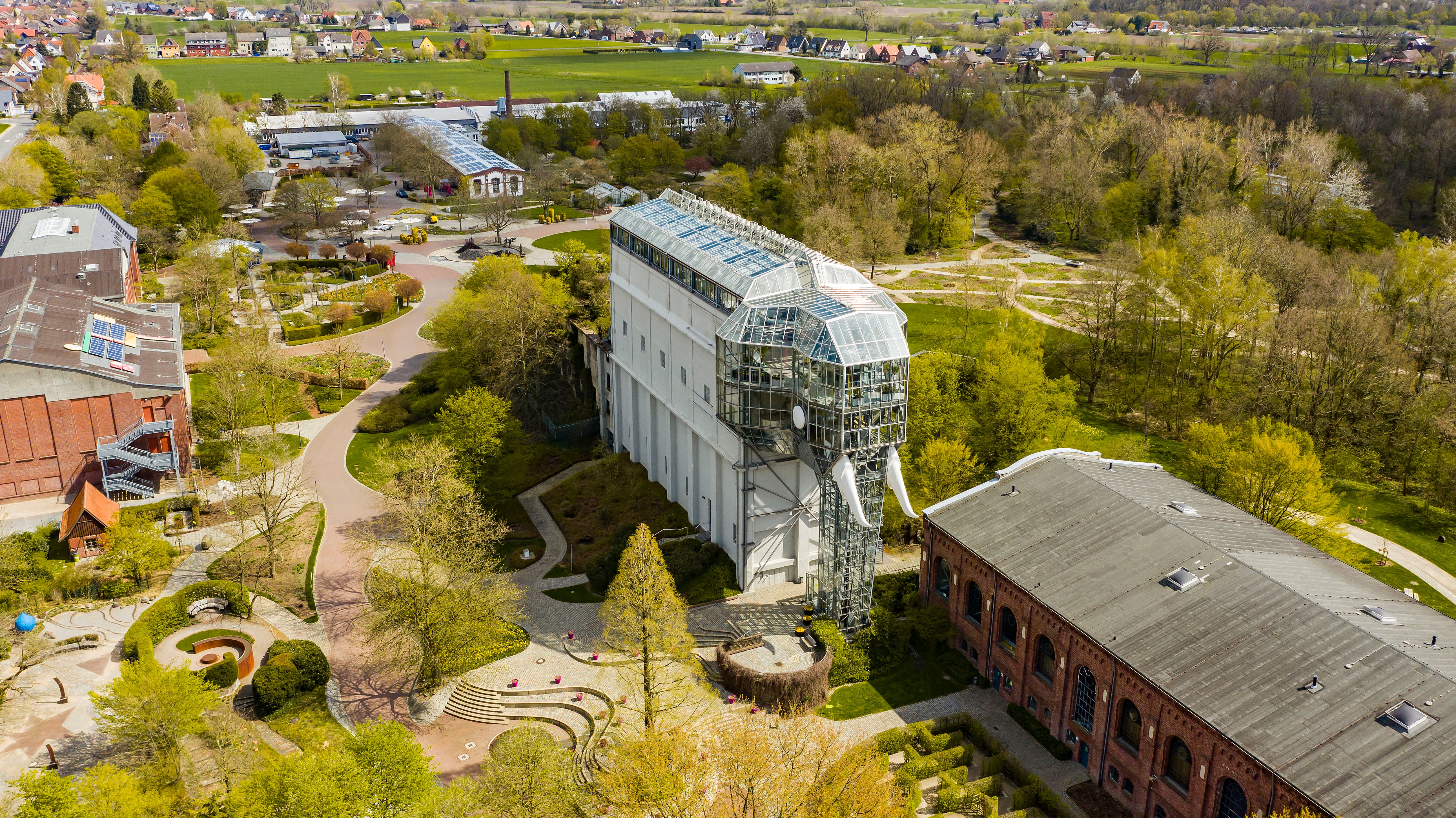Baroque, Rococo, Classicism and Historicism: the wonderful ensemble of buildings in the Bad Oeynhausen spa gardens represents all the great architectural styles of European history. At Bathhouse I, for example, the strong orientation towards antiquity can be seen in the pilasters, cornices and impressive column architecture. A few steps further on, at Bathhouse II, the domed room with its colorful mosaic design stands out as a further development of historical design styles. Last but not least, the Residenztheater attracts attention. It stands out with its graceful form, which radiates elegance and lightness.
But it's not just the architecture of the Kurpark that impresses: the extensive green spaces are just as artistically designed, making the ensemble a true work of art. On the walking paths, guests cross stately avenues with pruned trees, linger in front of lush flowerbeds and take in the blaze of color. Hyacinths, carnations, lilacs, roses and sundew glow in bright pink and delicate purple. A sight to delight the eye and invigorate the senses.
A special highlight within this artistic park landscape is the baroque garden parterre with its impressive fountain in front of the Kurhaus. Numerous benches invite you to take a break here. The magnificent building from 1908 presents itself in all its splendor. The beautiful front with arched windows, the copper-roofed central pavilion with its turquoise patina and the delicate decorative elements and figurative representations in the brickwork bear witness to its former importance. Today, the building known as the Kaiserpalais houses the GOP Varieté Theater, two restaurants and a discotheque. It thus remains a place of entertainment, as it was intended to be from the very beginning.
White gold as a remedy
The roots of this unique park go back a long way. As early as 1847, Peter Josef Lenné, Director General of the Prussian Royal Gardens, drew up the first plan for the horseshoe-shaped park. With financial support from the Prussian monarchy, his visionary project was finally realized between 1851 and 1853.
In the years that followed, the magnificent spa and bathing buildings that still characterize the cityscape today were gradually built. A later jewel was added in 1926 with the marble-white Wandelhalle. Since then, spa guests and day visitors have been able to taste the healing water from the Wittekind Fountain II here - a ritual that brings the healing power of the place to life. Fittingly, two large sculptures personifying "health" and "water" are enthroned above the side wings of the Wandelhalle.
Just a few steps away, directly opposite the Wandelhalle, visitors encounter another historical figure from Bad Oeynhausen: Colon Sültemeyer. His statue on a bench commemorates the man on whose property the town's first salt spring was discovered. This was the decisive moment for the later development of the state spa Bad Oeynhausen.
However, the history of the white gold is not only reflected in monuments, but also in the town's living landmarks. The nearby Sielpark with its graduation tower tells the story of salt extraction, while the Aqua Magica cultural and landscape park impressively showcases the power of water. The latter was created for the State Garden Show 2000 and still fascinates visitors today with its walk-in underground fountain sculpture. A visit is an experience that reflects the special character of Bad Oeynhausen in an incomparable way.

